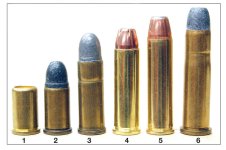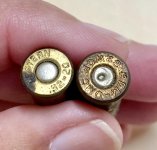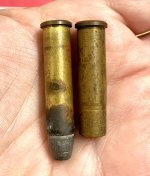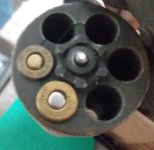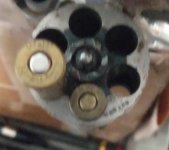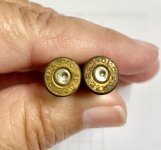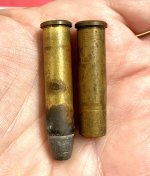As a visual reference, here are some .32 caliber cartridges for comparison. Note that the .32 H&R Magnum and the .327 Federal Magnum are relatively recent cartridges and did not exist at the time you are researching.
1 - .32 blank
2 - .32 S&W
3 - .32 S&W Long
4 - .32 H&R Magnum
5 - .327 Federal Magnum
6 - .32-20
FYI, while it is possible to load a .32 S&W or .32 S&W Long into a .32-20 revolver and have it fire, these are relatively low pressure rounds. It's not recommended because the case body is smaller than the .32-20 and the brass will swell in the larger chamber. However if one is desperate and that is all that is on hand, it can be done.
Out of curiosity I tried chambering a .32 H&R and a .327 in one of my .32-20 revolvers and neither would fit, which is a
good thing. The .327 in particular operates at approximately
triple the pressure of the older cartridges.

